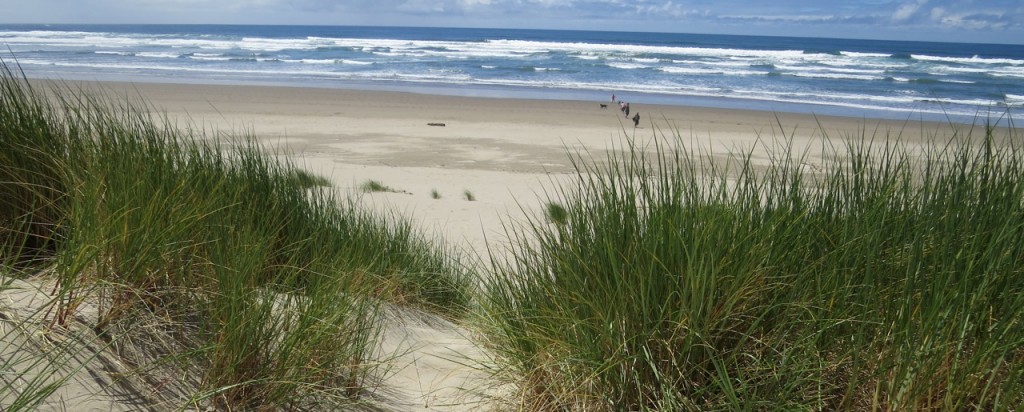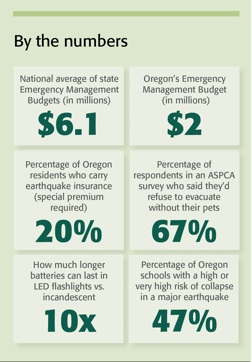Douglas County’s emergency manager says be prepared to take care of yourselves and your neighbors; there won’t be enough emergency personnel to help everyone

Part of Wayne Stinson’s job is to talk to the public about disaster preparedness. His message at a recent meeting on the southern Oregon coast was simple: “You need to be ready, because the government won’t be there for you.”
It brought one audience member to tears.
“It sounds harsh, but it’s the reality,” says Stinson, the emergency manager for the Douglas County Sheriff’s Office. “There aren’t enough police, firefighters, EMTs and public works folks to help. There’s just not enough of them.”
Stinson’s words are echoed by the national emergency management community, especially in the aftermath of recent events hitting American communities — Superstorm Sandy and Hurricane Katrina.
In the case of a major disaster, even the most prepared government agencies will likely be overwhelmed with requests for help. Stinson recommends that people always be prepared for an event. It could come as a severe winter storm, a particularly devastating wildfire, or a catastrophic train derailment. But the worst-case scenario in our area is getting more and more attention as researchers pin down the science — a 9.0 earthquake and resulting tsunami when the Cascadia fault off the Pacific coast lets go.
People just shut down
“When I start thinking about Cascadia, it concerns me greatly,” Stinson says. It is such a great threat with such potentially devastating consequences, that he finds people often just don’t want to think about it.
“When I start talking about Cascadia, it’s so overwhelming that people just shut down. They don’t know where to start. It’s a little bit like: How do you eat an elephant?”
It’s a metaphor used by others when talking about the “Big One.” And the answer, of course, is one bite at a time.
To help get your household prepared, Stinson recommends starting small. Instead of buying four cans of soup, buy six. Don’t wait until your prescription medicines run out; make a practice of refilling them as soon as the prescription allows. Make sure you have a heat source you can use if the power goes out. Develop a plan so all family members know what to do and where to meet up in case of an emergency. Request a copy of the “Family Emergency Plan,” offered here; it provides a place to record such information.
Specific readiness tips are available from a number of organizations. The Federal Emergency Management Agency operates a Ready Campaign website, www.ready.gov, that offers a host of resources for personal preparedness. Click here to learn what’s available.
The American Red Cross (www.redcross.org) offers preparedness classes and publishes the “Together We Prepare Oregon” booklet. Red Cross guidelines recommend that families be prepared to rely solely on themselves for at least three days. As people in recent natural disasters discovered, it could be much longer than that.
“You need to think through the process,” Stinson says. “You don’t want to just survive, but survive in comfort.”
Help your community
On a larger level, people can help their communities by making disaster preparedness a priority. “We need to bring it to a level where political and government leaders are concerned,” Stinson says. “The key to a community being prepared is that leaders need to embrace the necessity of preparation.”
But it all comes down to individual preparation and a realistic view of what to expect — and what not to expect — during a catastrophic event. It’s the biggest thing Stinson deals with when talking with community members about preparation.
“There’s a huge expectation out there about everything we’ll be able to do for them. We will not be there,” he says emphatically.
“We don’t have enough resources.
“The only thing that will work is if citizens prepare, and there are lots of small steps you can take to get there.”
Reprinted with permission from Community Vitality, Spring 2014, © 2014 The Ford Family Foundation. For the full Community Vitality edition of ”The Time to Prepare”, visit http://www.community-vitality.org/Spring2014TimeToPrepare.html




